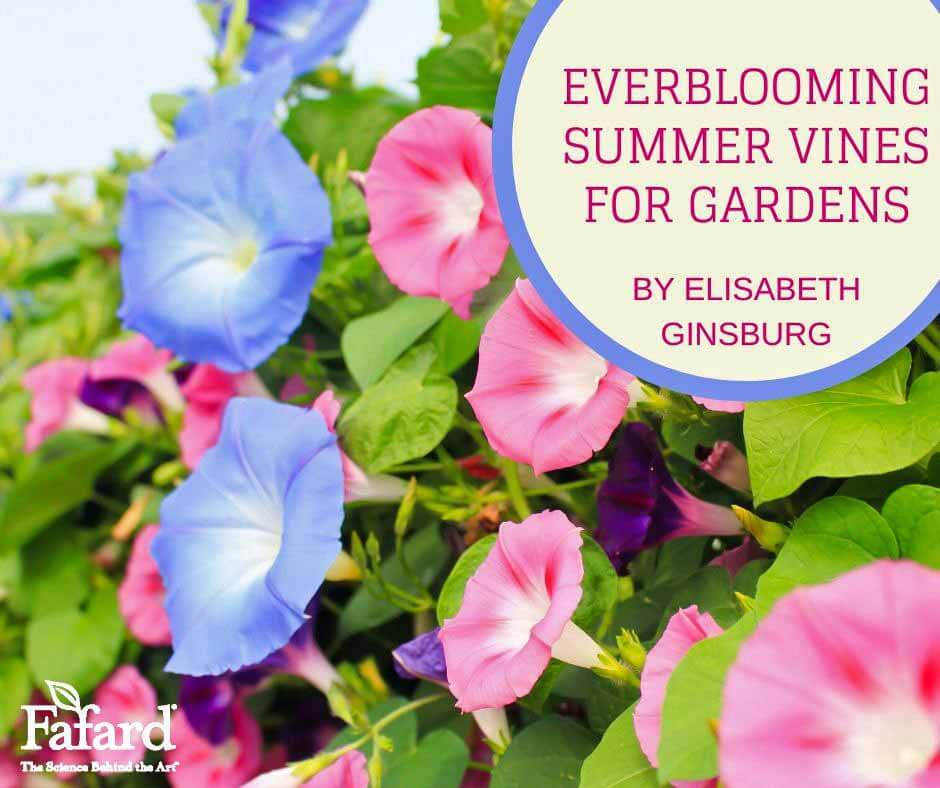
Savvy gardeners know that flowering vines do more than just hang around. No matter how thick their stems, vines are masters at pulling their weight in the garden, brightening vertical spaces, and providing small-space gardeners with a larger plant canvas.
Everblooming or nearly everblooming annual vines give the most colorful bang for the gardener’s buck and also delight the pollinators that flutter and fly to them. The range of choices is large, from the intricate blooms of climbing nasturtium (Tropaeolum Group) to the old fashioned charm of annual morning glories (Ipomoea purpurea). Most annual vines climb and twine with their own steam. All the gardener needs to provide is support in the form of a trellis, pergola, tuteur, or fence.
To give your vine the greatest chance of success, consider the amount of available vertical space, as well as sun and shade levels. Most flowering vines need full sunlight to look their best. At planting time, whether planting seeds or seedlings, amend the soil with Fafard Ultra Outdoor Planting Mix, to increase fertility, in addition to a slow-release fertilizer formulated for flowering plants.
Vines with Old-Fashioned Charm
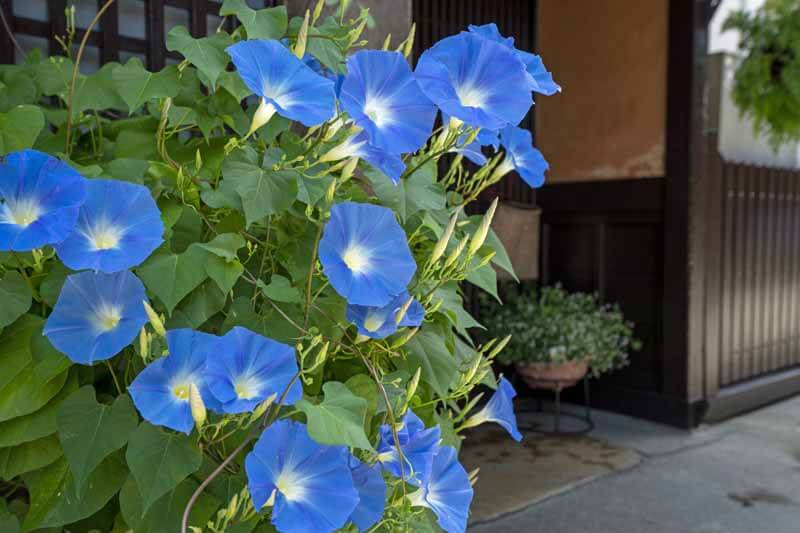
The cheerful common morning glory (Ipomoea-purpurea) and blue morning glory (I. tricolor) are probably the best-known annual vines. These familiar cottage-garden favorites feature funnel-shaped flowers that bloom from mid to late summer through frost, with new blooms opening each day against a backdrop of medium green, heart-shaped leaves. Common types bloom earlier than blue and come in a range of colors from white to red, pink, and purple, with some bi-colored varieties. Flower throats may be white, yellow, or even pink, like those of the white-flowered ‘Dolce Vita’. The heirloom variety, ‘Grandpa Ott’s’, features purple petals accented with brighter red-purple star-shaped markings. Blue morning glories have larger flowers that start blooming later and come in shades of sky blue and white. The impressive ‘Flying Saucers’ is splashed with blue and white stripes.
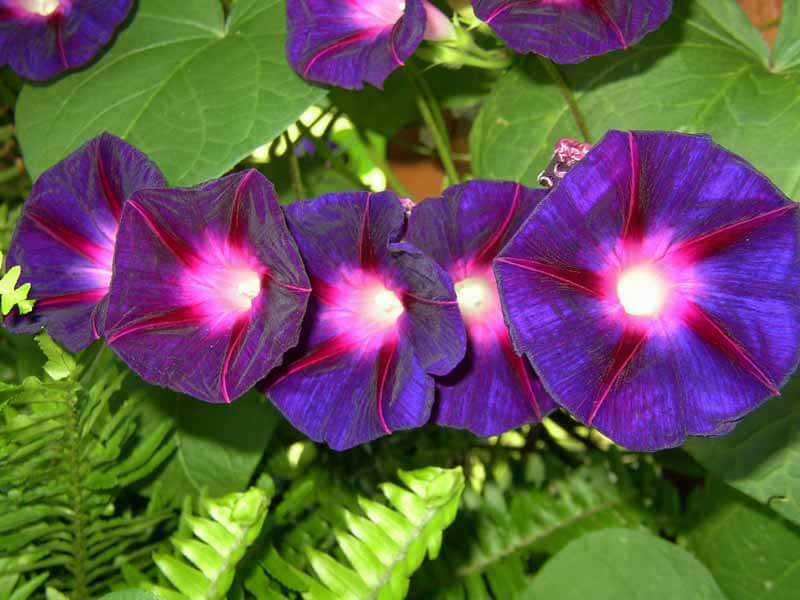
Grow morning glories to full sun and with well-drained soil provided with average moisture. The large seeds are easy to sow directly into the garden right after your area’s last frost date. Nick and soak them the day before for faster sprouting. The plants are liberal self-seeders, so one package of morning glory seeds may give you many years’ worth of climbing displays.
If you live with children or pets, it is wise to remember that morning glory seeds are toxic if ingested.
Vines with Drama at Dusk
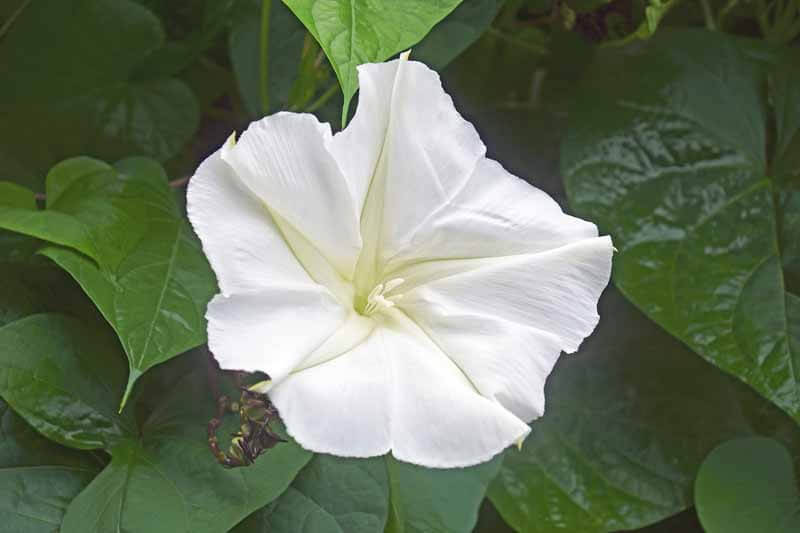
Moonflower (Ipomoea alba) is morning glory’s night owl cousin, with huge ivory funnels that glow and become fragrant at night. Pollinated by nocturnal moths, the blooms open at dusk and close up the following morning. Though they are night bloomers, moonflowers need full sun in the daytime, along with good soil and irrigation. Twining up a trellis, moonflower can climb 10 to 15 feet during the growing season. Like other members of the Ipomoea clan, it may also self-sow but less aggressively.
Vines with Tropical Flash

The heirlooms in Jewel of Africa mix are climbing garden nasturtiums (Tropaeolum majus). Over the course of summer, the vines can reach up to 8 feet tall, covering a fence or trellis with distinctive flowers of ivory, yellow, orange, and red. Some are exuberantly bi-colored. And the flowers are not the only part of the show. The leaves, which look like scalloped saucers, feature white marbling. For a more classic looking climbing nasturtium, try the 4 to 6 foot ‘Spitfire‘ that features lots of tangerine orange flowers.
If your drains well and is on the lean side, nasturtiums will not mind. Rich soils yield more vigorous vines with more lush foliage, while those with less fertility yield less robust growth but more flowers. These natives of the Andes mountains do not favor high heat, but once established in sunny spots, they can tolerant some drought. Nasturtiums are champion multi-taskers too. If you can bear to pluck them off the plants, the flowers are edible, adding a peppery note to summer salads.
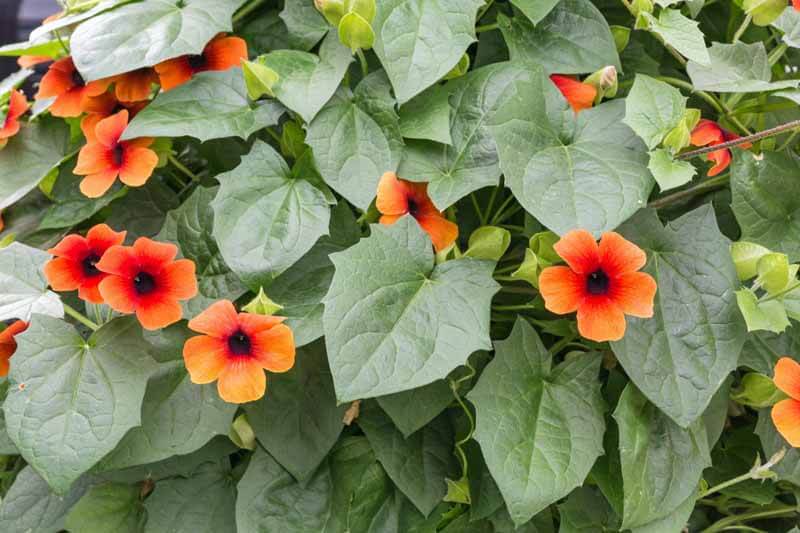
Another eager climber is black-eyed Susan vine (Thunbergia alata), which grows three to 8 feet tall at maturity. The most common variety boasts five-petaled, tubular flowers that glow in golden orange with black centers, a combination reminiscent of its namesake, perennial black-eyed Susan (Rudbeckia hirta). If you are planting several black-eyed Susan vines and want some color contrast, pick a seed mix that includes varieties with flowers in cream, orange-red, and yellow. All have the same dark centers. A large container with two or more varieties trained up a small trellis makes an excellent summer display. The elongated triangular leaves are toothed and somewhat coarser in appearance than those of morning glory or nasturtium, but black-eyed Susan vines compensate with an abundance of flowers. Grow them in partial to full sun, with regular watering and feeding.
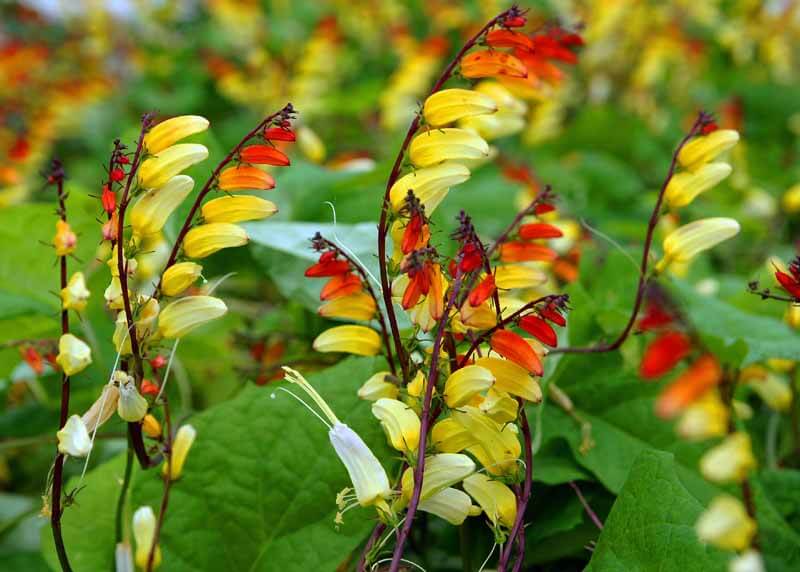
Firecracker vine (Ipomoea lobata) is another flashy performer for full sun that can climb up to up to 15 feet during its late summer to fall flowering season. The stems are adorned with green leaves shaped like elongated hearts. The flowers are tubular and borne on arching stems. Like any good fireworks display, firecracker vine is full of surprises. Its blooms are color changers, morphing from red to softer yellow over the life of each flower. This changeable nature means that firecracker vines look different from day to day, with a multi-colored effect that draws the eye and holds it.


